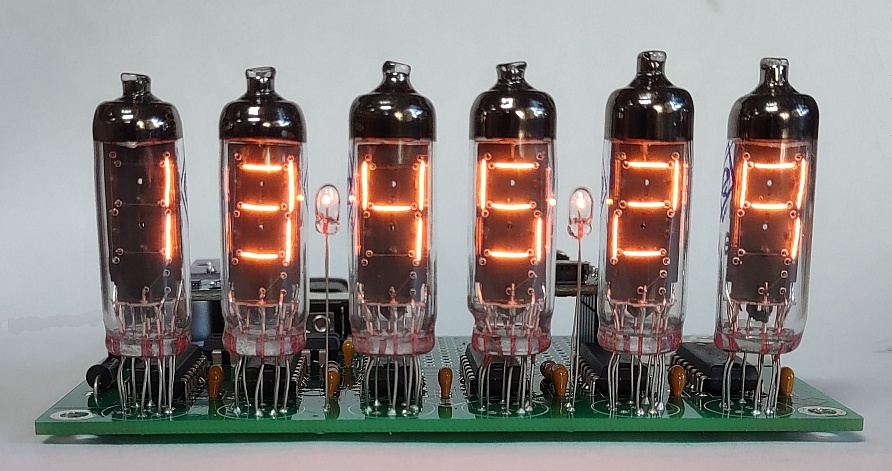
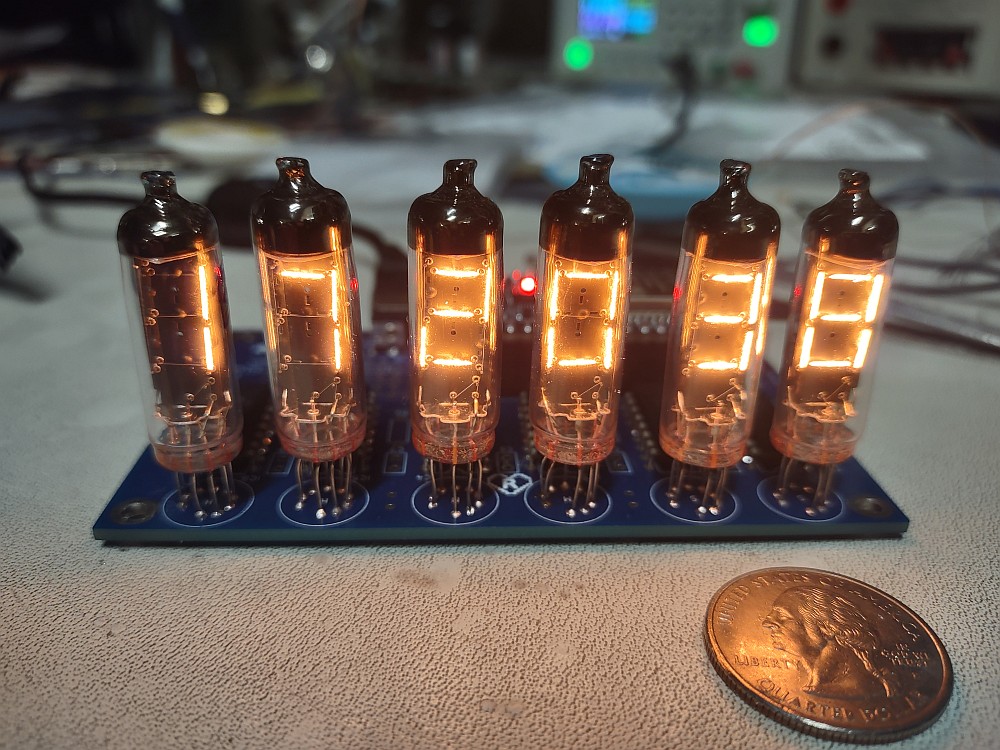
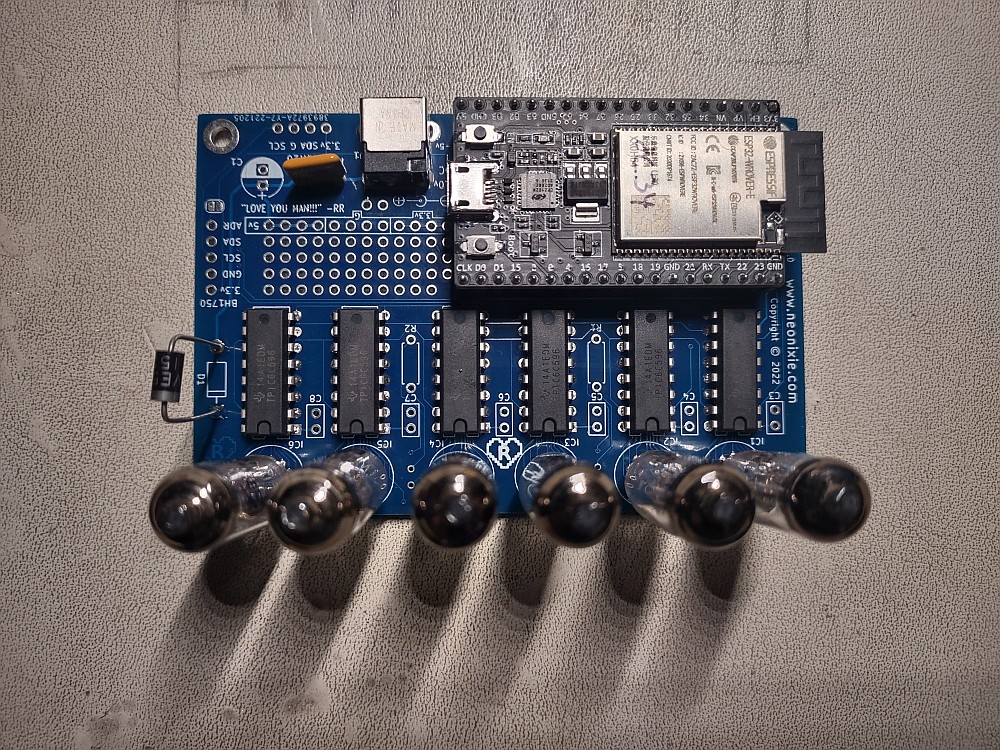
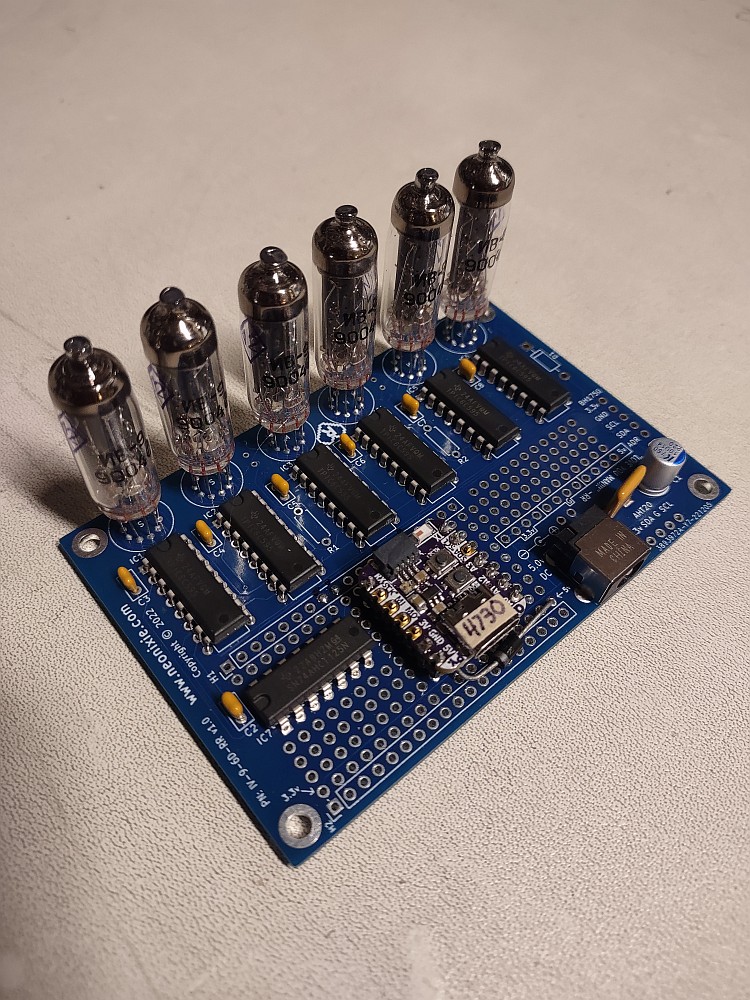
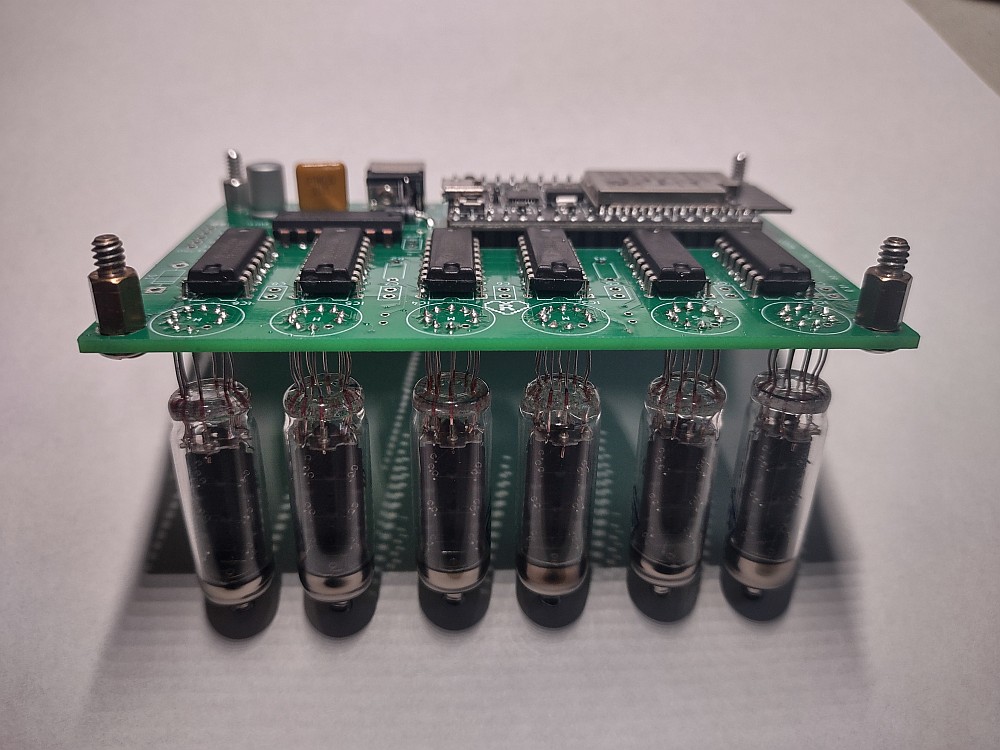
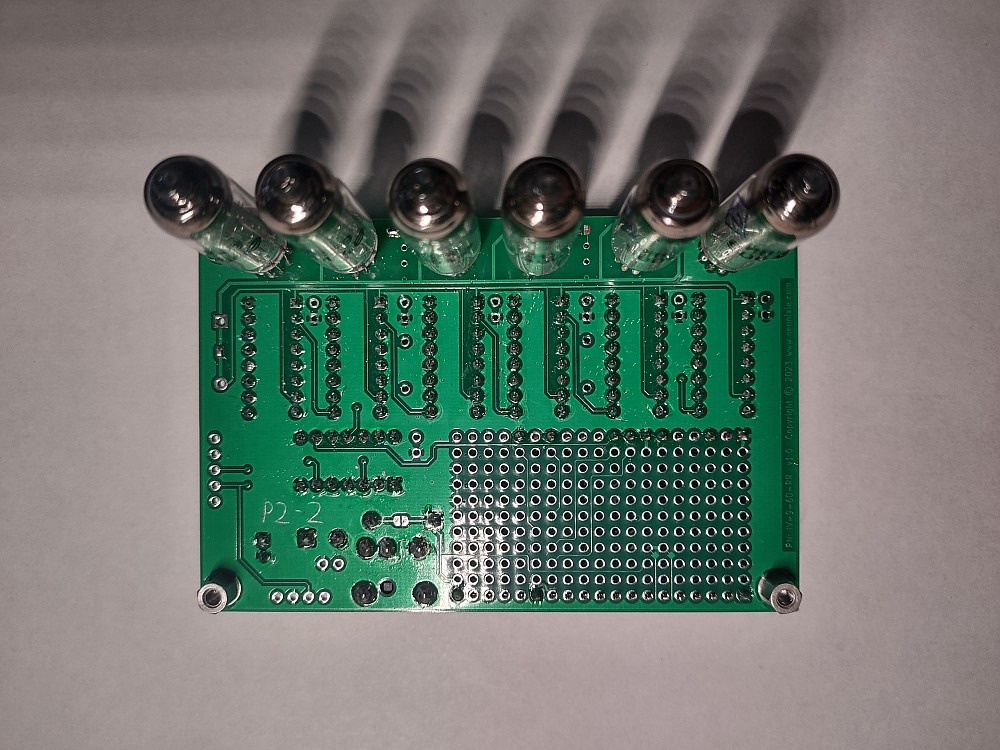
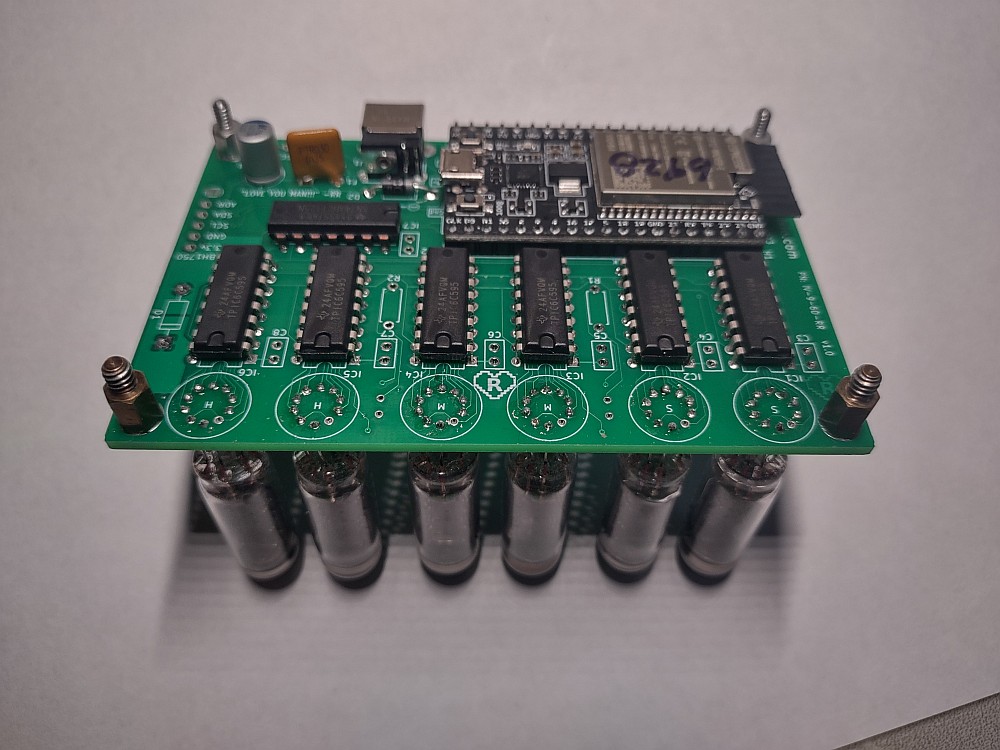

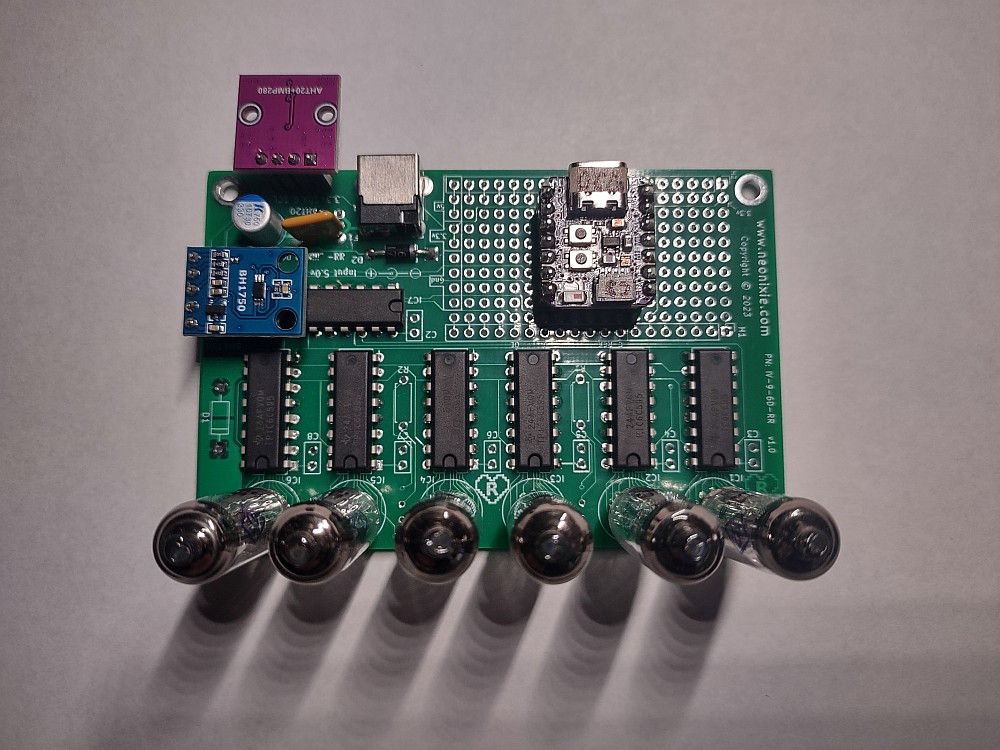
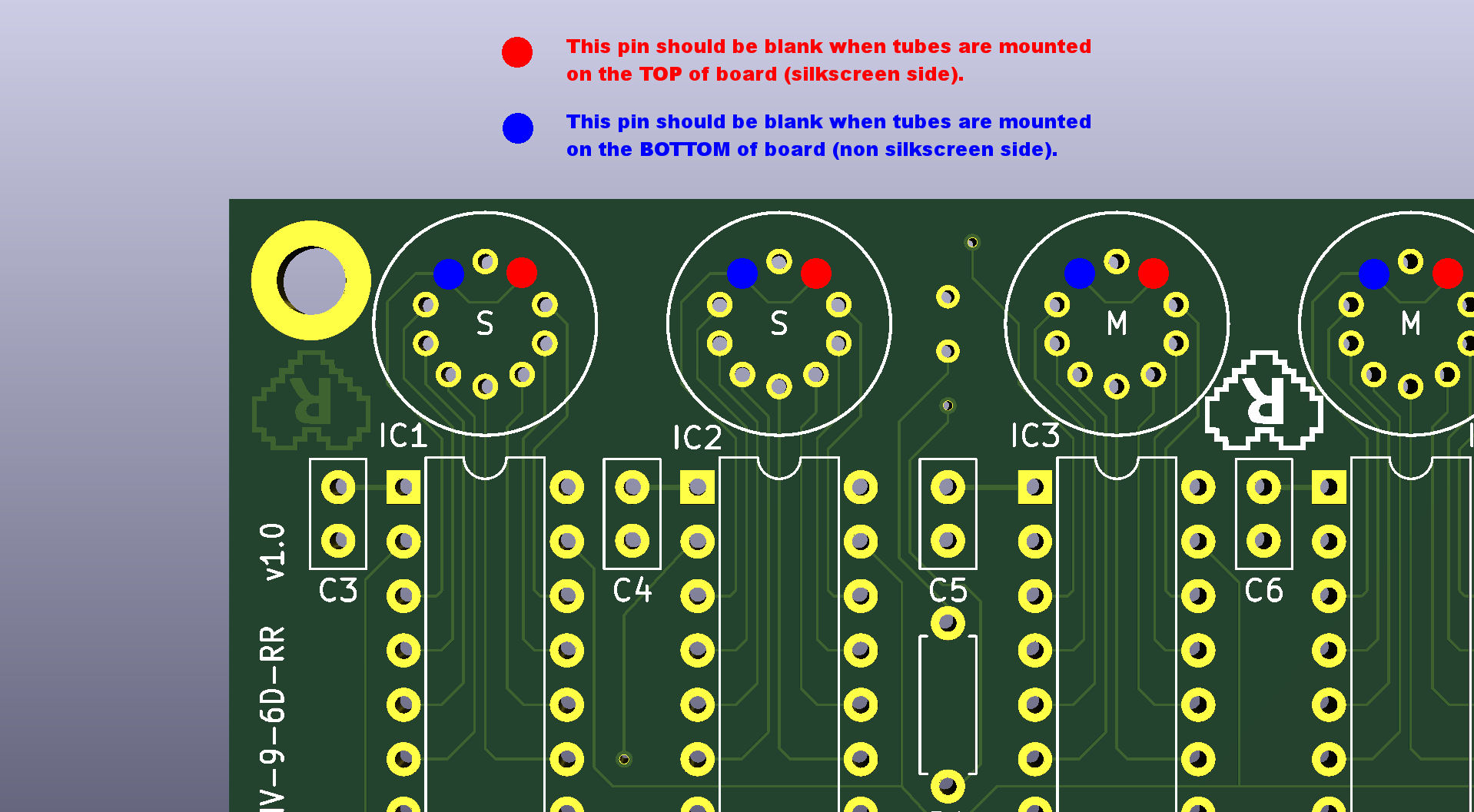
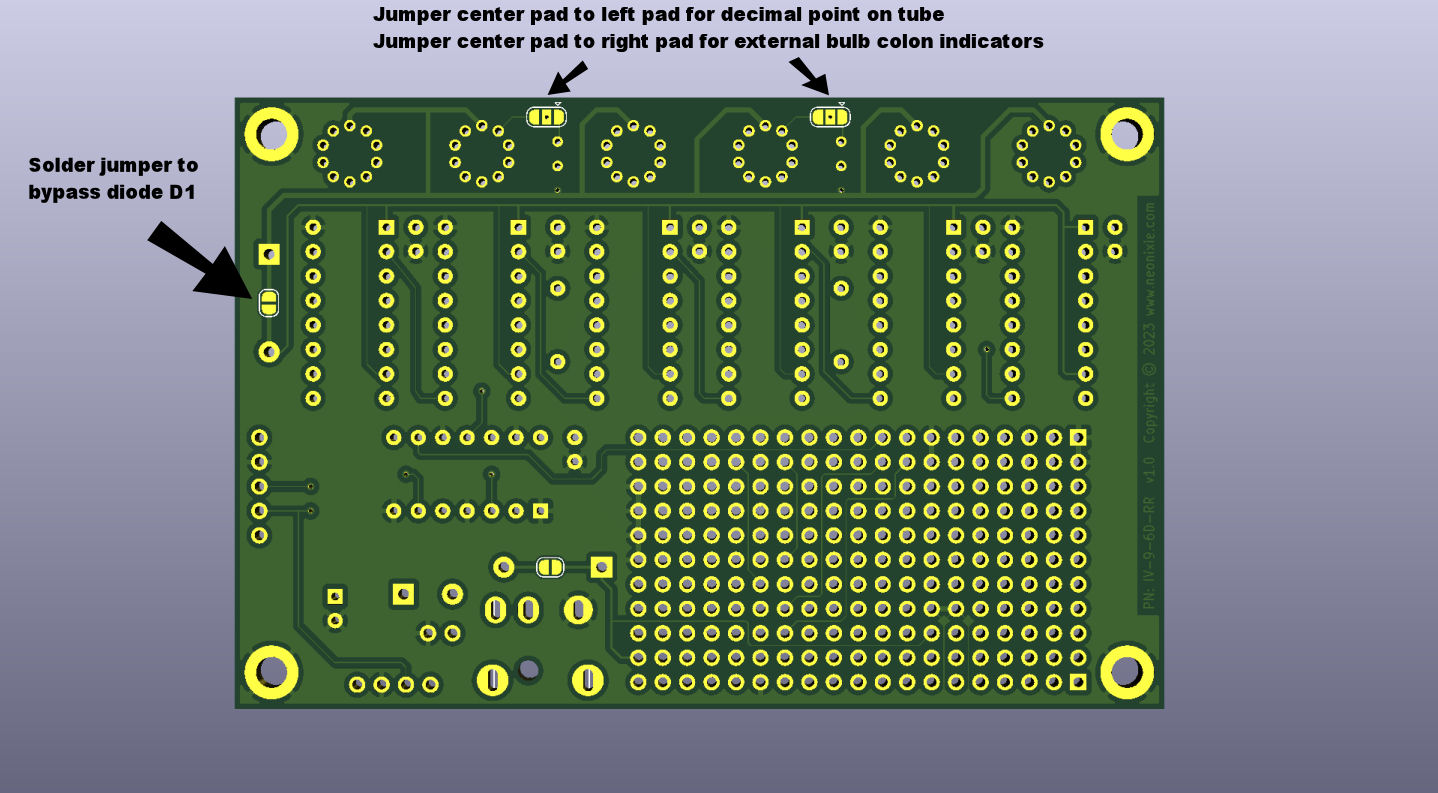
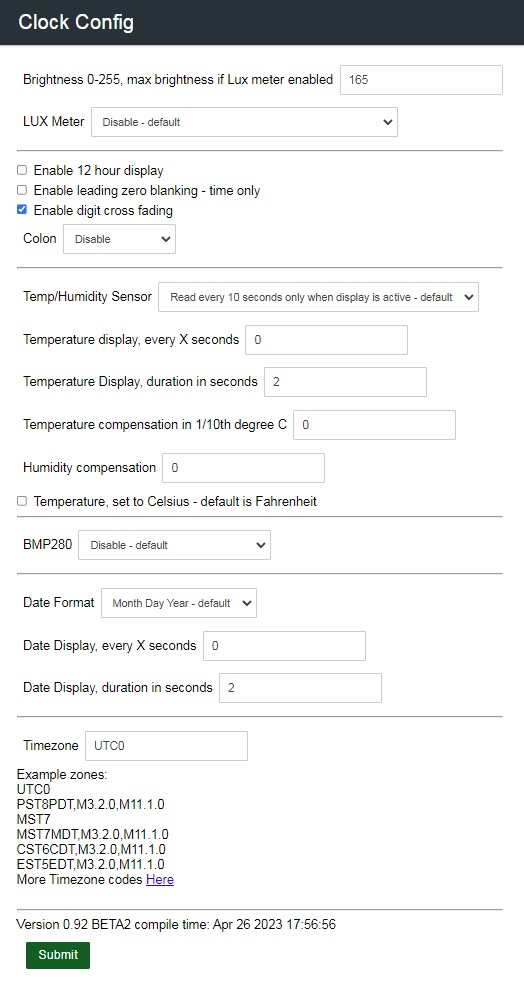
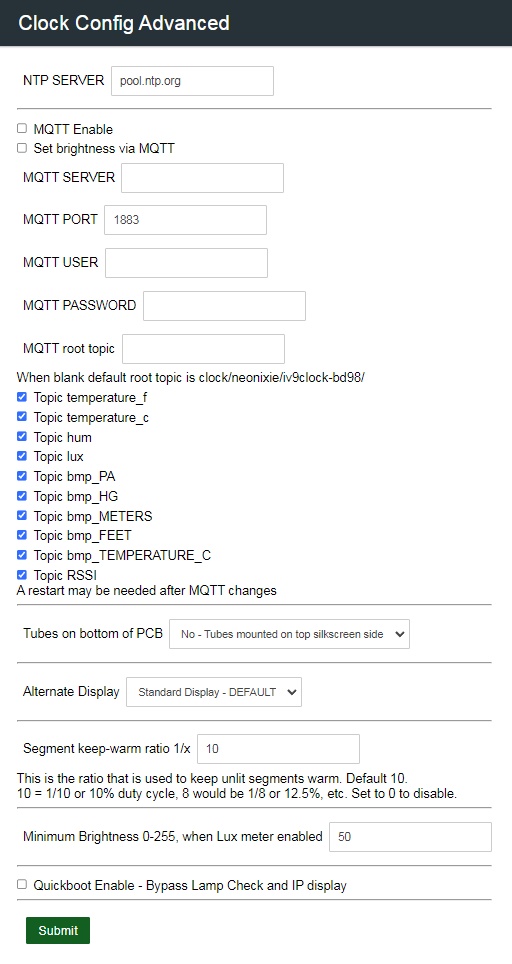
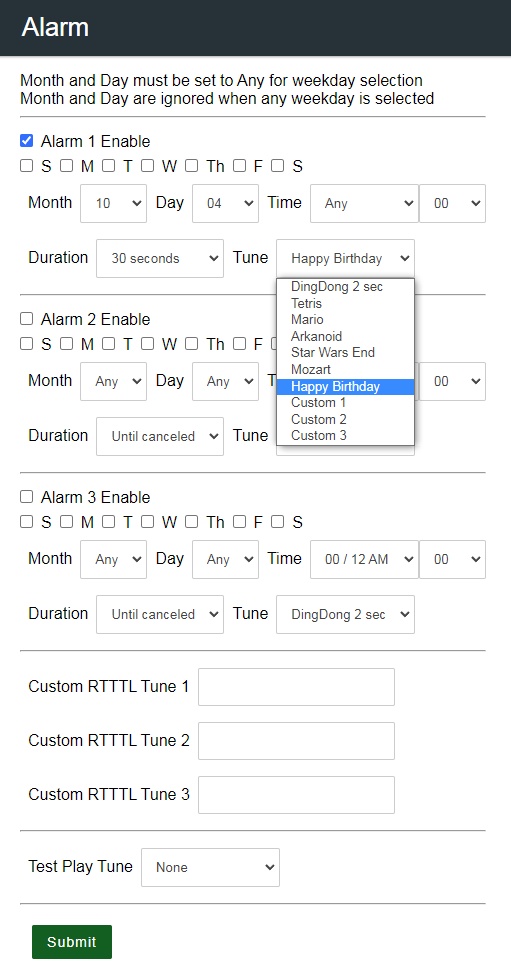
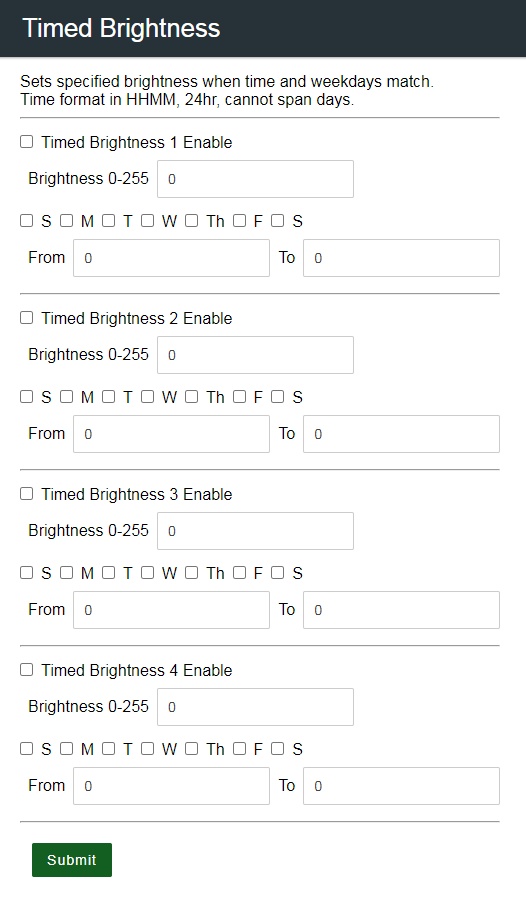
| Segment mA | Segment Voltage | PWM no diode | PWM with diode |
| 15 | 1.90 | 100 | 121 |
| 16 | 2.13 | 113 | 135 |
| 17 | 2.39 | 126 | 153 |
| 17.8 | 2.58 | - | 165(1) |
| 18 | 2.63 | 140 | 170 |
| 19 | 2.90 | 153 | 185 |
| 20 | 3.15 | 165(1) | 195(2) |
| 21 | 3.43 | 183 | 220 |
| 22 | 3.74 | 200 | 240 |
| 23 | 4.00 | 215 | 255 |
| 24 | 4.35 | 233 | - |
| 25 | 4.66 | 250 | - |
| 25.5 | 4.78 | 255 | - |
| (1)Software default 165, recommended brightness setting, diode bypassed | |||
| (2)Recommended brightness setting, with diode 195 | |||
